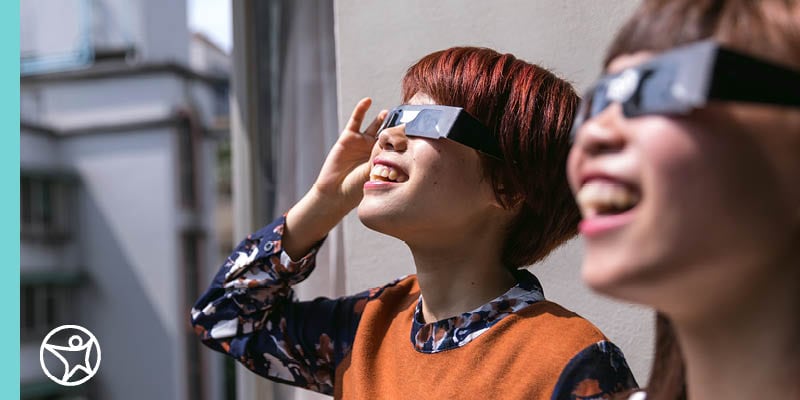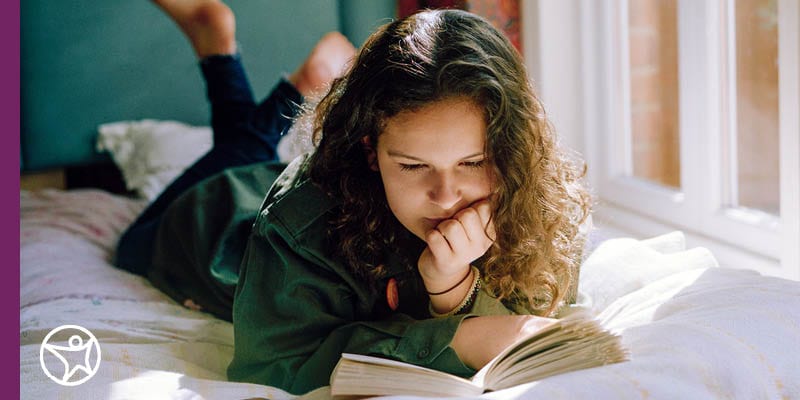Everything You Need for a Solar Eclipse Viewing Party
byElizabeth Preston
5 min to read
A solar eclipse is a great opportunity for kids to learn about astronomy and get students excited about STEM. But there are some things you should know first about where to view a solar eclipse and how to view a solar eclipse safely by making your own solar eclipse viewing box for a fun, at-home science project.
Here’s all that you need to know:
What is a Solar Eclipse
A solar eclipse is when the moon casts a shadow on Earth that partially or fully blocks the Sun’s light. Solar eclipses happen twice a year, though only certain places on Earth fall within the path of totality, where the sun is fully covered.
Similarly, a lunar eclipse occurs when the shadow of the Earth partially or fully blocks the moon in the night sky.
When and Where are the Best Solar Eclipse Viewing Times and Locations?
NASA posts the dates and times of the anticipated solar eclipses and the best viewing locations around the world.
How to View a Solar Eclipse Safely
Never (we repeat: NEVER) look directly at the sun without proper safety gear. Either view the solar eclipse through special eclipse glasses or use indirect viewing methods.
Eclipse Glasses
To view a solar eclipse safely, you can use eclipse glasses, which decrease visible light and block almost all of the sun’s ultraviolet light and infrared radiation, thereby protecting your eyes. The glasses must meet certain standards to be safe. Do NOT use your regular sunglasses.
Make sure that your eclipse glasses are labeled “ISO 12312-2” or “ISO 12312-2:2015.” They should also come from an authorized dealer or reputable manufacturer. If the glasses are ripped or damaged in any way, then do not use them and obtain different eclipse glasses or try an indirect viewing method (explained below).
NEVER look at the sun through binoculars, a telescope, or a camera while wearing a handheld solar viewer or eclipse glasses.
Pinhole Projection
The pinhole projection method uses shadows to view a solar eclipse. You need something with a small opening. This can be a colander, an index card with a small hole punched into it, a straw hat, etc. You can also cross your fingers over one another to create small holes between your fingers.
Have the sun at your back and let the sunlight project through the holes and onto a surface (like a floor). You will see the solar image on the surface. The solar image looks like a shadow, and it shows the progression of the moon’s shadow over the Earth.
DIY Solar Eclipse Viewing Box
Creating your own solar eclipse viewing box can be a fun and easy science project for students and families. You will need a small or medium cardboard box with a lid, a piece of white paper, tinfoil, a needle or pin, tape, and something to cut the box with.
Step 1
On one side of the box, cut a hole about 1x1 inch near the box’s top edge.
Step 2
Put a piece of tinfoil over the hole and tape it into place. It does not matter if the tinfoil’s dull side is facing inwards or outwards.
Step 3
Poke a small hole in the center of the tinfoil with a needle or pin.
Step 4
Cut the white paper to size and then tape it to the inside of the box opposite of the foil-covered hole. The white paper will function as a projection screen, and it will be where you will see the eclipse’s image.
Step 5
On an adjacent side to the side with the white paper, cut a 1x1-inch hole in the box to make a viewing hole. Make sure to cut the hole as far away from the white paper as possible on this adjacent side as you will need the angle to view the eclipse on the white paper.
Step 6
Put the lid on the box.
Step 7
Take the box outside and stand with your back to the sun. Put the box’s foiled side towards the sun. You will be looking away from the sun and through the 1-inch uncovered hole.
Position the box so that it lines up with its own shadow. This will ensure that you are aligning the box with the sun.
When you look through the 1-inch uncovered hole, you should see a small circle of light on the white piece of paper (the image screen). This small circle is the sun. During a solar eclipse, the small circle will become partially or fully shadowed to show the eclipse’s progression.
Solar eclipses are great opportunities to get students excited about STEM fields. Also, making your own solar eclipse viewing box can be a fun, at-home science project that engages students. As long as you follow the proper safety precautions, solar eclipses can be bright moments of learning for students.



